Bucharest’s medieval past is alive and well at the Princely Court of Vlad Tepes. Here, visitors can explore the remnants of a 15th-century landmark that shaped the city’s history. Amidst the Corinthian columns and arched gateways, the stories of Romania’s infamous ruler come to life. But there’s more to uncover than just the legend of Vlad the Impaler. The court’s architectural gems and cultural significance offer a glimpse into Bucharest’s rich heritage, hinting at the captivating journey that awaits those who delve deeper into its medieval past.
Key Points
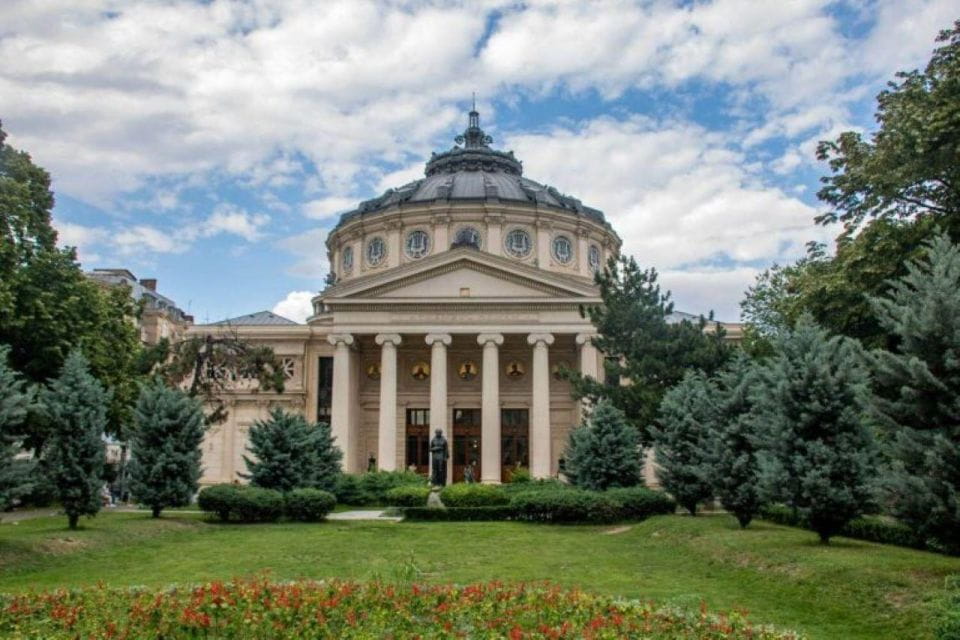
- The Old Princely Court in Bucharest was the former residence of Vlad the Impaler, a 15th-century prince whose legacy inspired the Dracula folklore.
- The court served as a commercial and cultural hub, with architectural landmarks like the Corinthian column and arched gateways reflecting its former grandeur.
- The site offers insights into Bucharest’s medieval history, with archaeological ruins and preserved 16th-century frescoes showcasing the city’s cultural and religious significance.
- The tour explores Bucharest’s architectural diversity, from the neo-Renaissance style of the Romanian Athenaeum to the Byzantine influences of the Stavropoleos Monastery.
- Visiting the Old Princely Court allows visitors to experience the transformation of a fortified settlement into a thriving commercial center and gain a deeper understanding of Vlad the Impaler’s legacy.
Tour Overview and Details
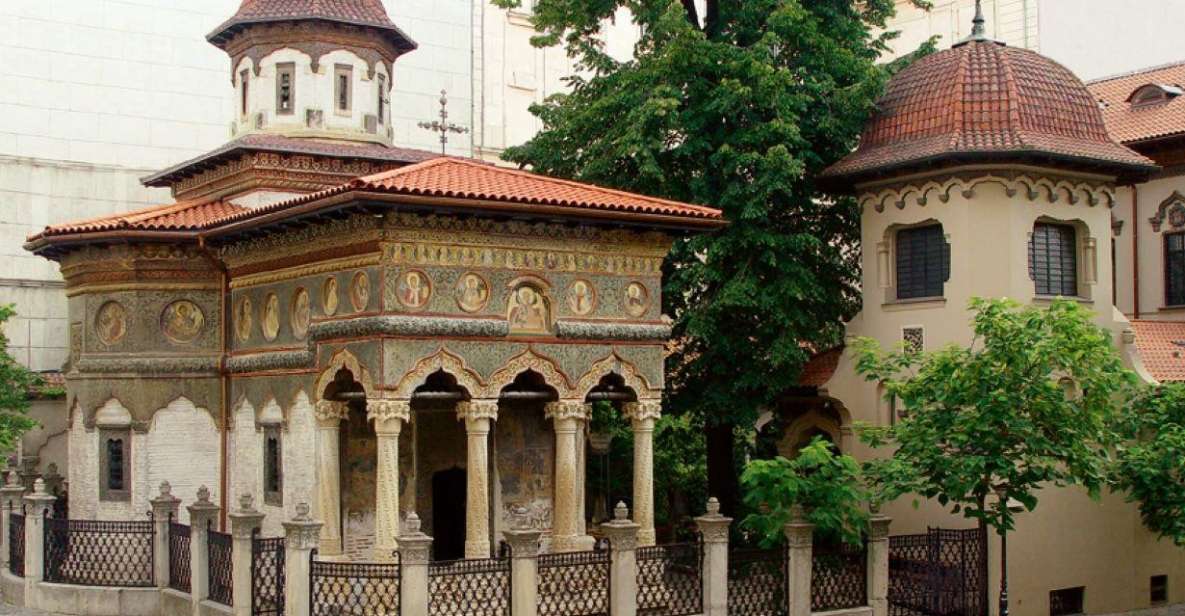
The tour offers a comprehensive 3-hour exploration of Bucharest’s medieval princely court associated with the infamous Count Dracula, Vlad the Impaler. Priced from €70.34 per person, the tour provides a live English and Romanian-speaking guide, free cancellation up to 24 hours in advance, and a pay-later option.
Visitors can expect to visit the Old Court Palace, Romanian Athenaeum, Stavropoleos Monastery, and other notable historic sites across the city. With wheelchair accessibility, this tour promises an immersive journey through Bucharest’s captivating past, uncovering the architectural gems and cultural treasures that have shaped the city’s enduring legacy.
Preparing travelers for an unforgettable experience, the tour delivers a well-rounded introduction to Vlad the Impaler’s princely court.
You can also read our reviews of more tours and experiences in Bucharest.
Itinerary Highlights
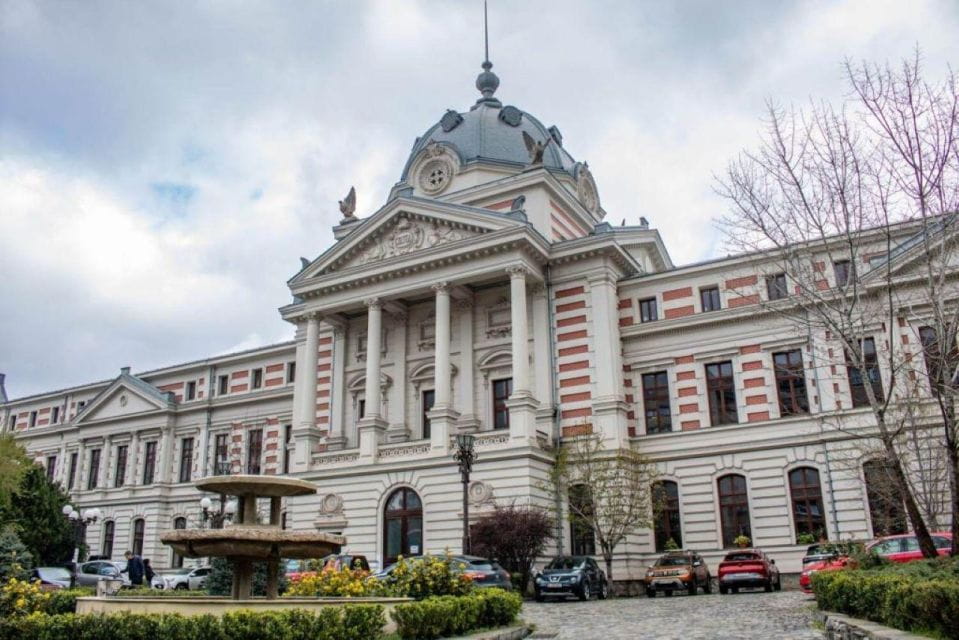
Starting from the iconic Boulevard Ion C. Brătianu, the tour takes visitors on an immersive journey through Bucharest’s medieval heritage, highlighting the city’s most captivating historical sites. The first stop is the impressive Old Court Voivodal Palace, the former residence of Vlad Țepeș, the infamous Count Dracula. Nearby, the tour explores the grandeur of the Romanian Athenaeum, a stunning example of 19th-century neoclassical architecture. Other highlights include the serene Stavropoleos Monastery, the charming Coltei Church, and a visit to Manuc’s Inn, a well-preserved 19th-century inn. Along the way, the tour also showcases the National History Museum, the picturesque Cișmigiu Garden, and the iconic Revolution Square, providing a comprehensive understanding of Bucharest’s rich history and cultural significance.
| Main Stops | Additional Notable Sites |
|---|---|
| The Old Court Voivodal Palace | Manuc’s Inn (1808) |
| Romanian Athenaeum | St. Anthony Church (oldest church in Bucharest) |
| Stavropoleos Monastery | Caru cu Bere (established 1879) |
| Coltei Church | National History Museum |
| Cișmigiu Garden | |
| Revolution Square |
Historical Significance
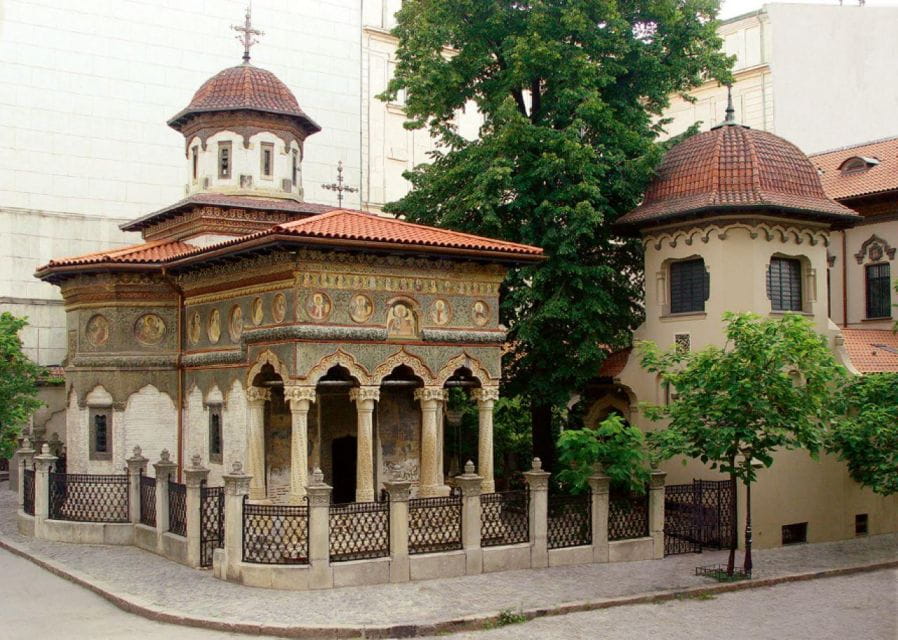
Although Bucharest’s history can be traced back to the 15th century, the city’s medieval significance is largely tied to the imposing Old Princely Court built by Vlad Țepeș, the infamous Count Dracula.
As the fortified settlement flourished into a commercial center, the court suffered damage from natural disasters over the centuries. Yet the remains, including walls, arches, and a Corinthian column, have been well-preserved, offering a glimpse into this storied past.
The oldest document attesting to Bucharest’s origins, signed by Vlad Țepeș himself in 1459, further underscores the court’s historical importance.
Today, the site is home to the Old Court Museum, where visitors can explore the captivating legacy of this medieval landmark.
Cultural Insights
Intriguingly, Bucharest’s cultural tapestry is woven through iconic architectural gems like the Stavropoleos Church (1724) and Coltei Church, which stand as significant landmarks. Lipscani Street, established in the 15th century, was once a thriving commercial hub for merchants of diverse ethnic backgrounds. On top of that, the Old Princely Court and Church served as a coronation site for Romanian princes, and the preservation of original 16th-century frescoes within the Old Court Church offers a glimpse into its storied past.
| Cultural Landmark | Historical Significance | Architectural Features |
|---|---|---|
| Stavropoleos Church | Established in 1724 | Ornate Byzantine-style architecture |
| Coltei Church | Significant cultural and religious site | Unique blend of Baroque and Brâncovenesc styles |
| Lipscani Street | 15th-century commercial hub for diverse ethnicities | Charming streetscape with historic buildings |
Tour Experience and Expectations
By embarking on this captivating tour, travelers can dive into Bucharest’s rich history and explore its iconic architectural gems.
They’ll have the chance to discover hidden cultural treasures and enjoy local stories, experiencing the city’s unique charm through guided exploration of historical sites.
The tour includes a certified national guide and entrance to the renowned Old Court Palace, offering an immersive glimpse into Bucharest’s storied past.
Visitors will wander through the well-preserved remains of Vlad the Impaler‘s 15th-century court, learning about the fascinating history and significance of this legendary figure.
From the grand Athenaeum to the serene Cișmigiu Gardens, this tour promises an enriching and unforgettable journey through Bucharest’s captivating medieval past.
- Draculas Castle, Peles Castle and Brasov Day Trip From Bucharest
- Transylvania and Dracula Castle Full Day Tour From Bucharest
- Small-Group Day Trip to Draculas Castle, Brasov and Peles Castle From Bucharest
- Bohemian Bucharest Markets and Mahallas Traditional Food Tour
- Draculas Castle, Brasov and Peles Full-Day Tour From Bucharest
- The Real Tour of Communism
Exploring the Old Princely Court
At the heart of Bucharest’s medieval heritage stands the captivating Old Princely Court, a testament to the city’s illustrious past.
Visitors embark on a journey through time, exploring the well-preserved remains of this 15th-century citadel, once the seat of power for Vlad the Impaler, the legendary figure who inspired the Dracula folklore.
Among the highlights, visitors can marvel at the towering Corinthian column, the sturdy defensive walls, and the evocative arches that hint at the court’s former grandeur.
Wandering through the site’s archaeological ruins, travelers can almost feel the presence of Vlad Tepes, the infamous prince who fortified this settlement and transformed it into a thriving commercial hub.
Architectural Gems of Bucharest
Beyond the captivating ruins of the Old Princely Court, Bucharest’s architectural landscape showcases a rich tapestry of styles, from the grand Romanian Athenaeum to the ornate Stavropoleos Monastery. These historic landmarks offer a glimpse into the city’s cultural heritage and the evolution of its architectural identity.
| Site | Architectural Style | Significance |
|---|---|---|
| Romanian Athenaeum | Neo-Renaissance | Iconic concert hall and cultural institution |
| Stavropoleos Monastery | Byzantine and Brâncovenesc | Renowned for its intricate stone carvings and frescoes |
| Coltei Church | Baroque and Romanian architectural influences | One of the oldest churches in Bucharest, dating back to the 16th century |
| Manuc’s Inn | Ottoman-era style | Historic inn and cultural hub, dating back to 1808 |
These architectural gems stand as testaments to Bucharest’s vibrant past, inviting visitors to enjoy the city’s timeless beauty and uncover its diverse cultural narrative.
Discovering Bucharest’s Rich History
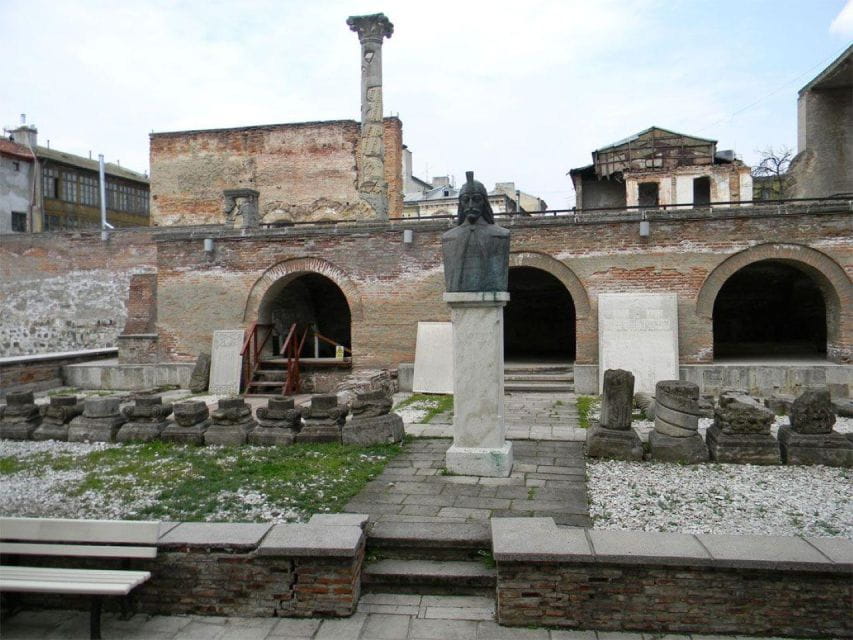
Bucharest’s rich history unfolds through the evocative ruins of the Old Princely Court, where the infamous Vlad the Impaler, known as Count Dracula, once fortified a thriving commercial center.
Visitors can explore the remnants of this 15th-century fortress, including:
- The imposing Corinthian column and arched gateways that hint at the court’s former grandeur.
- Tombstones and architectural fragments that bear witness to the site’s turbulent past, marked by earthquakes and fires.
- The original 16th-century frescoes preserved in the Old Court Church, offering a glimpse into the cultural and religious significance of this historic place.
As guests unravel the captivating stories of Bucharest’s origins, they gain a deeper appreciation for the city’s enduring spirit and the fascinating characters that have shaped its rich history.
Frequently Asked Questions
Is Photography Allowed Inside the Historical Sites?
Photography is generally allowed inside the historical sites during the tour, but visitors are advised to follow any specific guidelines or instructions provided by the tour guide or site staff. Visitors should respect the preservation of the sites.
Can I Bring My Own Food and Drinks on the Tour?
Yes, you can bring your own food and drinks on the tour. The tour operator encourages guests to enjoy a snack or beverage during breaks between sites to keep energized throughout the 3-hour experience.
What Is the Dress Code for the Tour?
The tour has a casual and relaxed dress code. Visitors are encouraged to wear comfortable clothing and walking shoes, as the tour involves walking through historical sites. No formal attire is required for this guided exploration of Bucharest’s medieval landmarks.
Do I Need to Bring My Own Headsets for the Audio Guide?
No, you don’t need to bring your own headsets for this tour. The tour provides audio guides that attendees can use to enhance their experience and learn more about the historical sites along the way.
Is There an Option to Upgrade the Tour to a Private Experience?
Yes, there’s an option to upgrade the tour to a private experience. For a higher fee, you can enjoy a more personalized exploration with a dedicated guide focusing on your specific interests and schedule.
Recap
The medieval Princely Court of Vlad Tepes stands as a testament to Bucharest’s rich history and cultural heritage.
Visitors can explore the architectural remnants, including Corinthian columns and arched gateways, while delving into the captivating stories that shaped Romania’s past.
This site symbolizes the enduring spirit of Bucharest, offering a glimpse into the city’s medieval roots and its unwavering connection to its remarkable legacy.
More Tour Reviews in Bucharest
- Bucharest : Parliament, Village Museum & Ceauescu Mansion
- Small Group Tour to Mogosoaia Palace & Snagov Monastery
- Bucharest: Walking tour with Italian speaking guide for small groups
- Bucharest Tuk Tuk City Tour
- Bucharest: Old Town & Historical Landmark Guided Tour
- Bucharest: Dracula Castle, Peles Castle & Brasov Guided Tour
Not for you? Here's more things to do in Bucharest we have recnetly reviewed
- PREMIUM TOUR SMALL GROUP: Peles&Bran Castles&Brasov Day Trip
- From Bucharest: Bulgaria Private Day Trip with Guide
- Slavery in Romania,Myths and Truths on Gypsies, Walking Tour
- Museums and Galleries walking tour in Bucharest
- PREMIUM TOUR SMALL GROUP Bucharest-Constana: Coastal Escape
- Private tour to Bulgaria : Ivanovo Churches & Veliko Tarnovo
- Therme:Spa Day at the biggest oasis of RelaxationBucharest
- From Bucharest: Dracula’s Castle & Bear Sanctuary Adventure
- Bucharest: Hidden Gems 2.5-Hour Walking Tour
- Communist Museums Marathon: 3 museums and all transfers incl
- Bucharest: Arc de Triomphe & Village Museum Guided Tour
- Bucharest: Custom Souvenir Workshop
